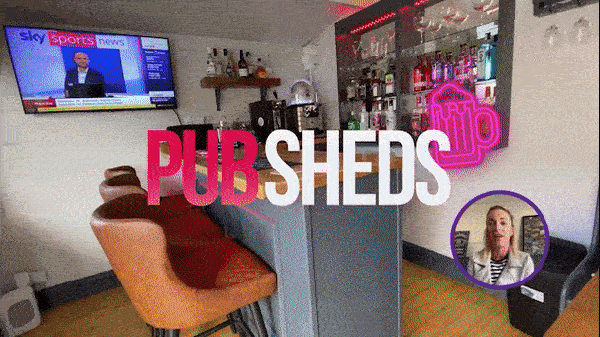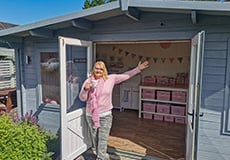Timber prices are rising sharply with the construction industry struggling to get supplies. After lockdown, there has been a huge demand for DIY and creating new projects using timber.
The Timber Trade Federation (TTF) said to the BBC many suppliers throughout the country are “working around the clock” but are “struggling to keep up”.
There is also an immense amount of pressure on supply, due to climate change, with more wildfires and pests that kill trees.
80% of timber is imported in the UK (bbc.co.uk, 2021) and there are a number of people calling out for the UK forestry industry to be better looked after.
According to the BBC, the government said it was “committed to trebling tree planting rates by the end of this Parliament” and there are plans to create more woodlands to help and increase the supply and demand for UK-grown timber.
The BBC also mentions that over half of the structural wood that is used in the UK is supplied from Sweden, and it is the first time in 20 years that the country has seen the lowest stock levels.
The Chief Executive of TTF, David Hopkins said to the BBC: “The pandemic has been the biggest factor causing the problems between supply and demand… but there are other factors at play. We’ve got these huge forest fires raging across North America that will take lots of timber out of production.
“The fires, and now the bugs, are taking out a significant volume from the market.”
Pryor and Ricket Silviculture takes charge of around 50,000 acres of forestry across the UK. Graham Taylor, the managing director, went on to say that it was a given that the natural forests around the whole world were suffering from climate change.
The BBC quoted him saying “Canada is reducing its annual cut because its own natural forests are under threat from fire, pest and disease. Because it is such a big producer, when it pulls back, the rest of the world catches a cold.”
Major increase in demand, it is only going up!
An architect and project manager at Studio Bark, Wilf Meynell, has been impacted by this crazy demand. He has created a sustainable, modular, all-timber system used in many self-build projects called U-Build.
He has said to the BBC: “Everyone’s taking a hit. Our entire business is focused around timber. The price of birch ply has doubled, and the cost of our standard work has risen by 25%.”
Mr Meynell’s “giant Lego with bolts” (as stated by the BBC) is constructed from sustainably managed Finnish spruce – so for every tree cut down, six more are planted. In comparison to concrete, which is carbon-intensive and is ruining the environment (bbc.co.uk, 2021).
Cities are only getting larger and the design industry has noticed that there is a requirement to decarbonise the built environment. In an article by the World Bank, they predict that demand is only going to rise for wood products by at least 4% a year in the next 30 – 40 years (worldbank.org, 2020).
“In the UK, forest covers only around 13% of the land (bbc.co.uk, 2021). According to the National Farmers Union, in 2019, less than 60% of England’s existing woodlands were in “active management”.
Mr Hopkins, from the TTF, said to the BBC this had to change. “Why is it that the UK has the lowest forest cover in Europe, when we’re actually one of the biggest importers and users of timber in the world?
“Now, particularly as we’re hosting the climate change talks, we need to be talking to our own politicians in this country asking what are we going to do about it.”
Mr Meynell had been forced to find a local supplier for some of his timber on a site in Ross-on-Wye. He said it worked well, reducing emissions and supporting the local economy.
“It’s about educating people within the construction sector that UK timber does have great qualities and is affordable and can be sourced easily… if we’ve got the forestry to back it up, we could start solving some of these problems.”
An architecture student who has been volunteering on the site, Mersei Mongaba, said to the BBC that it is vital not to be “greedy” with material and resources.
“When we talk about this subject, we put trees in one whole category, but there are so many different types. There are some types – like spruce – where you’re OK to cut a certain amount, but with others – such as oak – we have to be a lot more careful and control how we are cutting them down.”
In the 1980s the conifer planting caused major habitat decline. Forest manager Mr Taylor followed up with the BBC and explained “the wrong trees were planted in the wrong place”
“There needs to be a blend – a large amount of commercial forest because this is about wood production, but there also needs to be extensive semi-natural planting for biodiversity.”
He continued on and said to the BBC decisions needed to be made now. “It’s a long old business… It’s 30-40 years for conifers. At the moment we are in the phase of producing mature oak, from trees that were planted in the Victorian period.”
The TTF predicted the disruption to supplies will continue for much of the rest of the year
Article sources:
- https://www.bbc.co.uk/news/science-environment-57920510
- https://www.worldbank.org/en/country/lao/publication/greener-growth-through-good-wood-sustaining-forest-landscapes-and-local-livelihoods-in-lao-pdr
Read our Timber Sustainability Policy.




